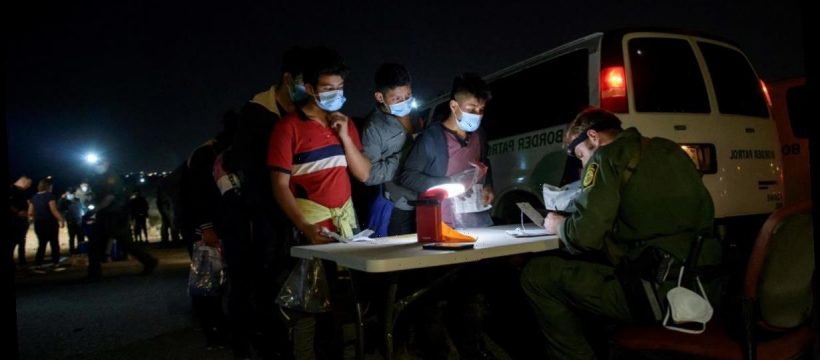Nearly 19,000 unaccompanied children entered U.S. custody along the southern border in March, an all-time monthly high that has forced the Biden administration to house migrant teenagers in convention centers, camps for oil workers and a military base, according to preliminary government data provided to CBS News.
The historic number eclipses previous record-high migration flows of Central American teenagers and children that strained the government’s border processing capacity under Presidents Barack Obama and Donald Trump in 2014 and 2019, respectively. The previous all-time monthly high came in May 2019, when nearly 12,000 unaccompanied children arrived at the U.S.-Mexico border.
U.S. agents along the southern border carried out approximately 170,000 total apprehensions in March — a 70% increase from the previous month. Nearly 100,000 of those taken into custody were single adults, whom U.S. border officials have continued to swiftly expel to Mexico or their home countries under a public health authority first invoked by the Trump administration.
More than 53,000 migrant parents and children traveling as families were also taken into Customs and Border Protection (CBP) custody, a more than 175% increase from February. While it is unclear how many families were expelled under the Trump-era public health edict, preliminary data obtained by CBS News showed that most parents and children encountered in March were being allowed to stay in the U.S. while their cases are reviewed.
U.S. border officials have not been expelling unaccompanied children since November 2020, when a federal judge barred the policy, saying it likely violated public health law and the legal protections Congress created for these minors. The Trump administration expelled more than 15,000 unaccompanied children, including victims of gang and domestic violence, before the federal judge’s ruling.
After an appeals court lifted the judge’s order in late January, the Biden administration formally protected unaccompanied minors from the rapid expulsions, which the U.S. government has said are designed to curb the spread of COVID-19 inside detention facilities and border communities.
Federal law requires border agents to transfer non-Mexican unaccompanied children to the Department of Health and Human Services’ refugee office within three days of encountering them. But the record number of children crossing the southern border and the U.S. government’s limited infrastructure to process them has forced border officials to keep minors in overcrowded and often jail-like facilities.
As of Thursday morning, there were nearly 5,000 unaccompanied migrant children in Border Patrol facilities, most of which were built to detain adult migrants for short periods of time. In March, unaccompanied youth were held in Border Patrol custody for an average of 130 hours, past the 72-hour limit outlined in U.S. law, according to data provided to CBS News.
Another 13,000 unaccompanied minors are being housed in shelters and emergency housing facilities overseen by HHS. The department has launched an unprecedented effort to open at least 10 emergency housing facilities in Texas and California with more than 16,700 beds to get migrant children out of the Border Patrol lockups.
Carlos Holguín, a lawyer representing migrant children in a landmark lawsuit, interviewed this week several migrant boys housed at a camp for oil workers in Midland, Texas that HHS converted into a makeshift shelter. He said the children described a “perfect storm” of factors that prompted them to trek north to the U.S.
Holguín said one Central American boy described how his family spent months cultivating and financing a tomato field only to see it destroyed by the twin hurricanes that hit the region last fall.
“You have the pandemic, the hurricanes and the pent-up demand from the Trump administration for refugee admissions,” Holguín told CBS News. “Then you also have the long-standing push factors: the lack of security and corruption in the region.”
Source: Read Full Article
